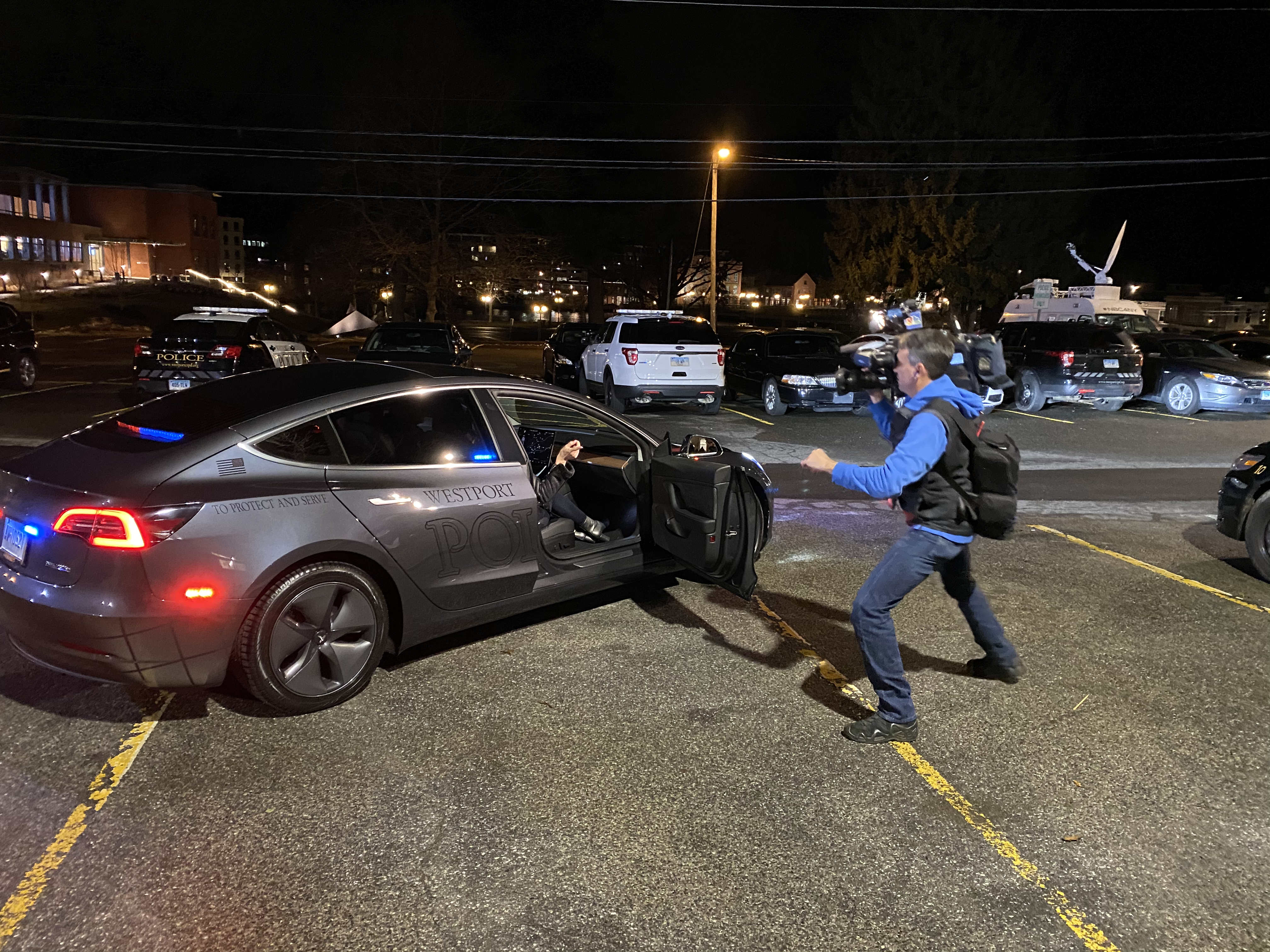New Tesla Police Squad Car is on Duty
Today, Feb. 5, 2020, marks the official entry into duty for the recently acquired Tesla Model 3 police cruiser.
The vehicle was acquired in early December and since then has been undergoing the necessary customization for law enforcement, followed by a period of testing by the police. The information below comes from a phone call with Chief of Police, Foti Koskinas.
The customization, performed by Whelen Engineering and Fleet Auto Supply, in cooperation with Tesla, while a lot of work, has turned out extremely well and the testing has exceeded expectations. The car has racked up about 600 miles during the testing phase.
Use of Native Tesla Tech Has Saved Money and Improved the Model 3 Police Vehicle
The police are able to make use of the Tesla headlights and brake lights. The other electrical gear, such as the police lights and siren, has been wired directly into the 75-kilowatt-hour battery (as opposed to the 12-volt battery). This means that adding another 12-volt battery to support those items will not be required. (A conventional police vehicle comes with an oversize battery and heavy-duty alternator).
One of the questions about going this route was how much of a reduction in range would be caused by this. And the answer, based on the testing, is that it turns out to be negligible. With today’s technology, such as LED lights, the power drain is small.
With Tesla’s cooperation, the police are using the sentry cameras that come with the Tesla, meaning that they will be spared the approximately $3,000 expense that is normally incurred to add this to a police cruiser. And the Tesla cameras are of superior quality than what they would otherwise get.
When we wrote an earlier blog post that discussed these things, the outcome was still speculative. We are happy to report that it is now a done deal.
There remains an open question about whether the WPD will be able to use the Tesla computer for their purposes. It is the most complex part of the integration and will simply take more time to figure out if and how it can be done with adequate protections for each party. In the meantime, the vehicle is outfitted with a tablet and a modem.
Tesla Model 3 Police Vehicle Safety Advantage
A speeding driver passes a stationary patrol car. This is a common enough occurrence and the average person may not give it much thought. But the police do. The patrol car has to accelerate rapidly, move into traffic, possibly cross lanes, and drive at a speedier speed than the speeder in order to overtake and then pull over the driver. All of which carries with it an increased level of hazard for the officer and the public. With instantaneous EV torque, and of course, Tesla building very fast EVs, less time is needed to reach the offender, and lower average speed is necessary, thus reducing the degree of hazard during these maneuvers.
This safety advantage of the Model 3 was characterized by the police as a big win. (Also, in a conventional car, when the accelerator is “pinned,” the fuel-efficiency drops to around 8 miles per gallon.)
We have been advised that Elon Musk himself has seen and praised the modification, saying this is what a Tesla Model 3 police vehicle should look like.
In case you were wondering…
The response from the officers has been enthusiastic with requests to be assigned to this car.
No autopilot. The insurance company won’t go there.
The vehicle has been equipped to make a noise while driving at low speeds as a pedestrian precaution. If you would like to know what a spaceship sounds like when it is powering up, come listen to this car. We have also heard other descriptions of it. Listen for yourself on Feb. 20.
The Westport Police will be bringing the vehicle to the club meeting on Feb. 20. See the home page for details.


